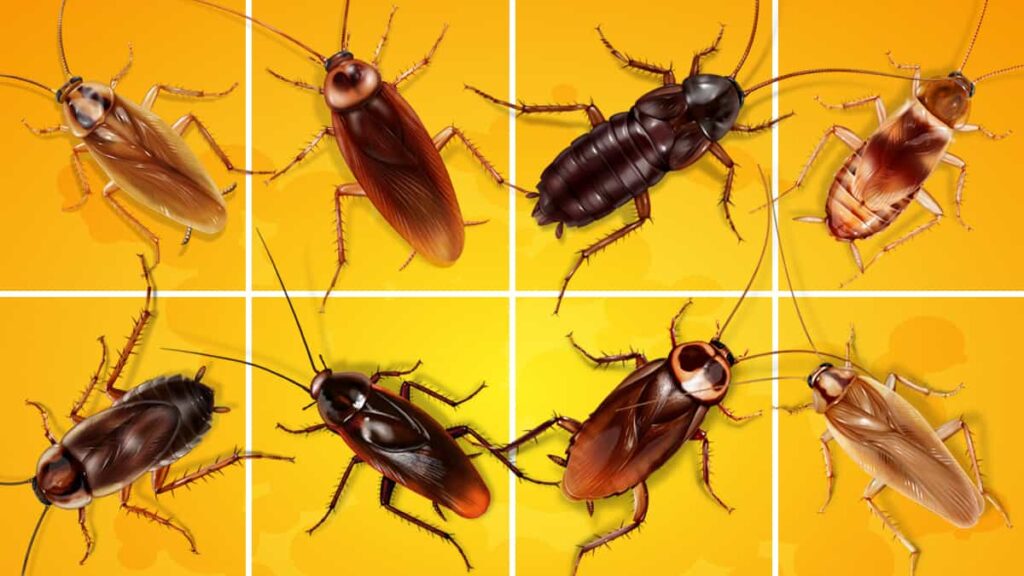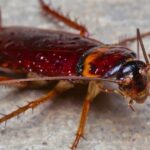Cockroaches are among the most resilient and common pests, but not all cockroaches are the same. Two species often confused due to their similar appearance and behavior are the Asian cockroach and the German cockroach. While they share some similarities, understanding their key differences is essential for effective pest control.
This article compares the Asian cockroach and the German cockroach in terms of appearance, behavior, habitat, and control methods.
Overview of the Asian Cockroach
The Asian cockroach (Blattella asahinai) is a fast-moving insect native to Asia but commonly found in parts of the United States, particularly in the southeastern regions. It was first identified in Florida in the 1980s.
- Appearance:
The Asian cockroach is light brown with two dark stripes running down its thorax, making it almost identical to the German cockroach in appearance. It measures about 0.5 to 0.6 inches in length. - Habitat:
Unlike most cockroach species, the Asian cockroach prefers outdoor environments, particularly areas with moist soil, mulch, and leaf litter. - Behavior:
Asian cockroaches are highly active during the evening and are capable fliers, often attracted to light sources such as porch lights or televisions. - Reproduction:
These cockroaches reproduce quickly, laying eggs in outdoor environments. A single female can produce multiple egg cases, each containing 30-40 eggs.
Overview of the German Cockroach
The German cockroach (Blattella germanica) is one of the most common indoor cockroach pests globally. It thrives in human dwellings and is particularly problematic in kitchens and bathrooms.
- Appearance:
Similar to the Asian cockroach, the German cockroach is light brown with two parallel dark stripes on its thorax. It is also about 0.5 to 0.6 inches long. - Habitat:
German cockroaches are predominantly indoor pests. They favor warm, humid environments with easy access to food and water, such as kitchens, pantries, and bathrooms. - Behavior:
Unlike the Asian cockroach, German cockroaches are poor fliers and rely on crawling to navigate their surroundings. They are nocturnal, hiding during the day and emerging at night to feed. - Reproduction:
German cockroaches reproduce rapidly, with females carrying egg cases (ootheca) containing up to 40 eggs. They hide these egg cases in warm, concealed spaces until they hatch.
Key Differences Between Asian and German Cockroaches
| Feature | Asian Cockroach | German Cockroach |
|---|---|---|
| Habitat | Outdoors (gardens, mulch, leaf litter) | Indoors (kitchens, bathrooms, pantries) |
| Flight Ability | Excellent fliers, attracted to light | Poor fliers, prefer crawling |
| Activity | Active during evening hours | Nocturnal, active at night |
| Preference for Light | Attracted to light | Avoids light, prefers dark spaces |
| Environment | Found in outdoor environments | Found indoors, near food and water |
How to Identify Each Cockroach
- Observe Their Behavior:
- If the cockroach is flying toward light sources, it is likely an Asian cockroach.
- If it avoids light and remains hidden during the day, it is more likely a German cockroach.
- Check the Location:
- Asian cockroaches are usually spotted outdoors in gardens or near mulch.
- German cockroaches are found indoors, especially in kitchens and bathrooms.
- Consider Their Activity Time:
- Asian cockroaches are active during the evening, while German cockroaches are nocturnal.
Pest Control Strategies
Asian Cockroach Control
- Outdoor Treatment: Use insecticides specifically labeled for outdoor cockroach control in gardens and mulch areas.
- Eliminate Light Attraction: Use yellow or sodium vapor lights outdoors, which are less attractive to these cockroaches.
- Maintain Yard Cleanliness: Remove leaf litter, mulch, and other debris to reduce breeding grounds.
German Cockroach Control
- Indoor Treatment: Use baits, traps, and insecticides specifically designed for indoor cockroach infestations.
- Eliminate Food Sources: Keep food sealed, clean up crumbs, and remove standing water.
- Seal Entry Points: Close cracks and crevices in walls, cabinets, and appliances to prevent hiding.
Conclusion
The Asian cockroach and the German cockroach may look similar, but their habitats, behavior, and control methods differ significantly. Identifying the species correctly is the first step toward effective pest management. Whether dealing with the outdoor-loving Asian cockroach or the indoor-dwelling German cockroach, understanding their characteristics ensures a targeted and successful approach to keeping these pests at bay.
By taking proactive measures and maintaining a clean environment, you can reduce the risk of infestations and enjoy a pest-free space.


